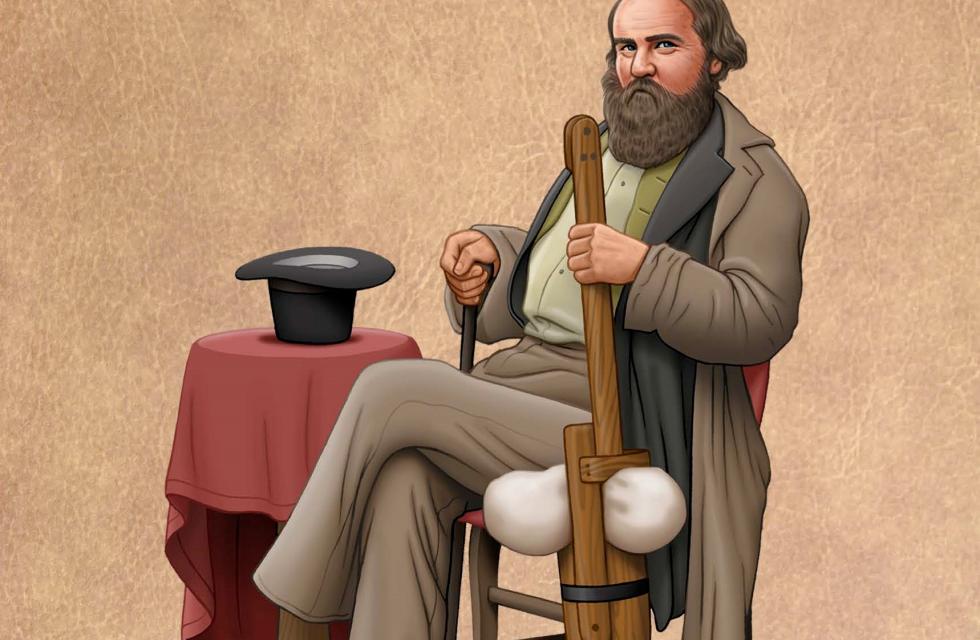The Saga of Peg Leg Smith
Thomas Long "Pegleg" Smith (1801-1866) was a mountain man who, serving as a guide for many early expeditions into the American Southwest, helped explore parts of present-day New Mexico. It is said that he ran away from home as a youngster and got a job on a Mississippi flatboat, eventually leaving with other men on a trapping expedition. Over the following years he worked his way south and west, following the rivers and tributaries, primarily trapping beaver. Like all mountain men, Smith became familiar with the Indians, their language, their customs and even had several Indian wives. However, somewhere during his trapping expedition he encountered some hostile Apaches and was badly wounded with an arrow to the knee. Historical records claim that because there were no doctors available and no one was willing to help, it was necessary for Smith to use his skinning knife to self-amputate his leg at the knee. He was taken in by the Indians and miraculously recovered, with the help of Indian women who chewed roots and berries and spit the juice on the wound. After Smith regained his health he fashioned a wooden peg leg from a tree limb.
This is a segment of a larger mural by Bernard Zakheim (1898-1985) illustrating the medical history of California. It is painted on the walls of a small amphitheatre (Toland Hall) on the campus of the University of California, San Francisco (UCSF). Zakheim was commissioned to paint the mural in 1937 as part of the Federal Art Project and President Roosevelt's program to support the arts during the Great Depression.
The wording Zakheim inscribed in his mural, on the stone beneath Peg-Leg Smith, reads "As a doctor and poet, we are all a little crazy".
Story complements of https://www.flickr.com/photos/greatestpaka/16629097720
Photo complements Bear Lake Publishing
For more information on Peg Leg Smith please click HERE.
